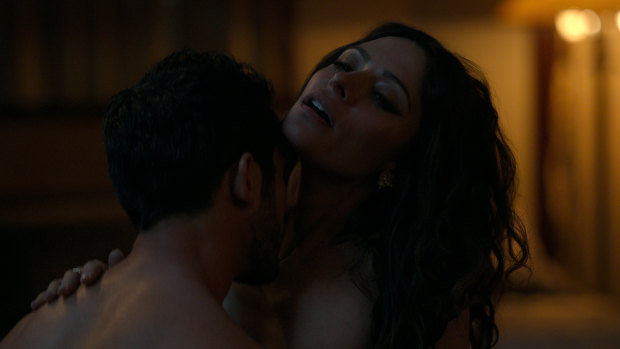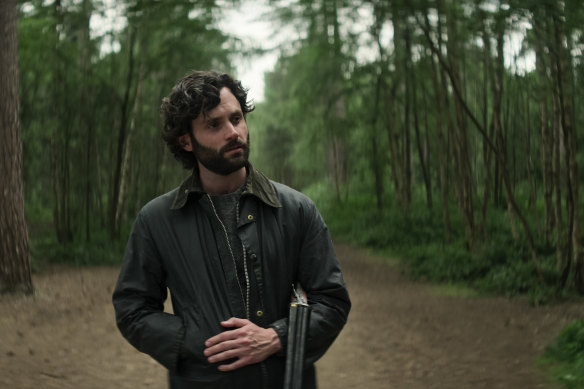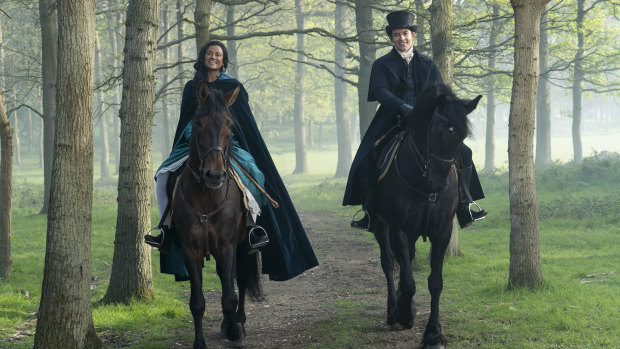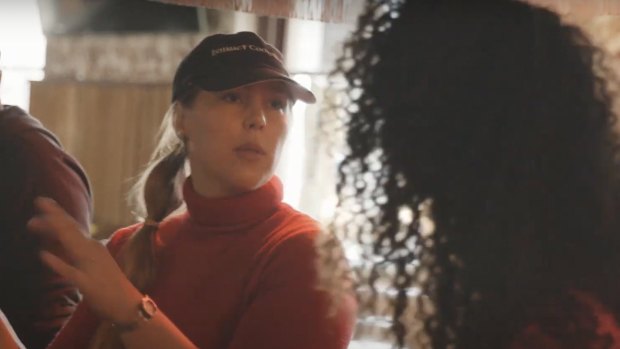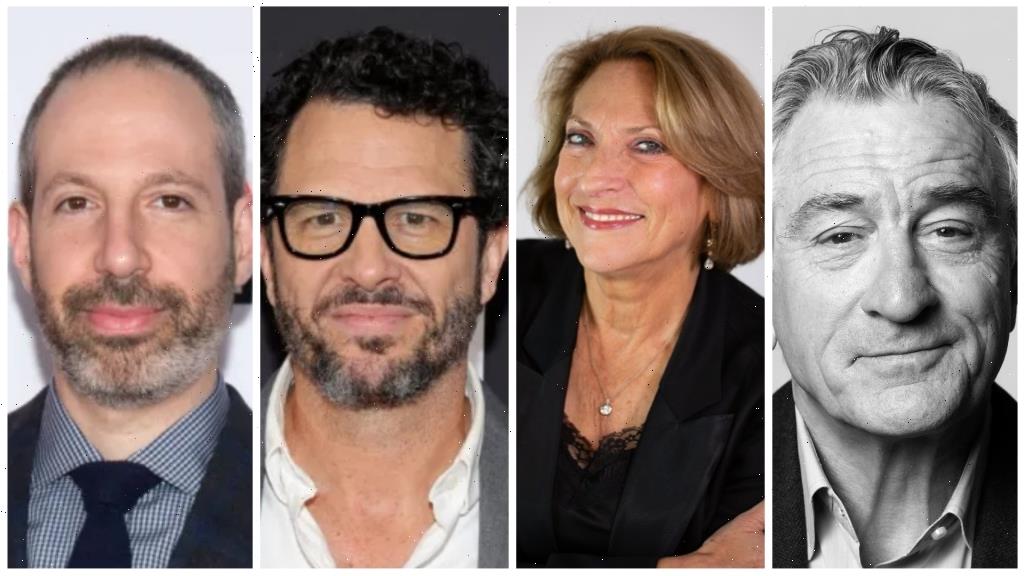Across the first two episodes of the latest season of Netflix’s Sex/Life, there are a total of seven sex scenes, including but not limited to full-frontal nudity, sex from behind, sex in the office, sex in the mirror, and one particularly gripping example of elevator sex.
The avalanche of sex is probably unsurprising, given the show first stumbled onto a global audience by having its characters regularly stumble into bed.
Sarah Shahi and Adam Demos star in the second season of Netflix series, Sex/Life.Credit:Netflix
But in an era where sex scenes are being actively debated, Sex/Life’s overreliance on raunch makes it an outlier.
For those unfamiliar, Sex/Life tells the story of Billie (Sarah Shahi), a bored suburban mother who decides to blow up her white picket life by rushing into the arms of her bad boy ex, Brad (Australian actor Adam Demos).
The Netflix series became a surprise hit when it premiered in mid-2021, thanks mainly to its in-your-face sex scenes (and one rather memorable in-your-face shower scene). What the show lacked in plot, it made up for in provocation, boosted by the fact that the two leads, Shahi and Demos, actually got together during production.
Ahead of season two, Shahi teased more of the same, telling The Times: “I feel like we might even have more sex scenes in the second season.”
Sex/Life season two features “more sex scenes,” but is that what audiences are after?Credit:Netflix
But while the show looks to capitalise on its early success by upping the ante, a broader conversation is taking place in the TV landscape: have we become so oversexed that now we’re over sex?
You star Penn Badgley certainly is. Earlier this month, he made headlines after admitting to requesting fewer sex scenes in the show’s most recent season, a noticeable change from previous seasons. For Badgley, it came down to personal preference, citing its impact on his relationships.
“My fidelity in my relationship is important to me and actually, it was one of the reasons I initially wanted to turn the role down,” he said on his podcast, Podcrushed.
“That aspect of Hollywood has always been very disturbing to me — and that aspect of the job has always been something that I actually don’t want to play with at all.”
Penn Badgley as Joe Goldberg in You. The latest season still features plenty of bodies, just not enough as much bodily contact.Credit:Netflix
According to the actor, showrunner Sera Gamble was very receptive, and as a result, there are significantly fewer sex scenes in the show’s fourth season, and all of them are clothed.
Despite the change, the latest season of the murder-mystery series put up 92 million hours viewed since its February 9 release date, making it Netflix’s most-viewed title that week.
The less is more approach appears to be catching on, with several series backing away from overzealous sex scenes in favour of something more subtle. The Bear was celebrated as one of last year’s best and “horniest” programs, despite featuring no sex.
Meanwhile, Bridgerton’s second season purposefully dialled down its more daring content.
As with Sex/Life, Bridgerton initially became a global phenomenon because everyone seemed to be having sex all the time. The first season featured 15 sex scenes, but season two was noticeably less thirsty, with just two.
Horseplay over foreplay. Bridgerton season two sees a rather restrained courtship between Kate Sharma and Anthony Bridgerton.Credit:Netflix
Addressing the change, showrunner Chris Van Dusen told Variety: “We never do a sex scene for the sake of it; all the intimate scenes have a larger purpose.”
So are we turning off rather than being turned on now by sex on screen? In her Atlantic article The Death of the Sex Scene, Sophie Gilbert examined the changing nature of sex scenes in TV and film.
The article discussed You’s stripped-back approach while also referencing the new romantic comedy You People. The Jonah Hill film charts an entire relationship between two people with almost no physical intimacy, zero sex scenes, and just one kiss.
“The history of film and television suggests that, sometimes, the sexiest thing two people can do on-screen is simply look at each other— for a prolonged period of time,” writes Gilbert.
Looking and not touching – or undressing – may seem archaic in a world where sex often still sells, but perhaps it speaks to a greater awareness that sexy doesn’t always mean sex.
Michela Carattini is an intimacy coordinator who has worked on some of TV’s biggest shows, including Prime Video’s Nine Perfect Strangers. An intimacy coordinator’s primary function is facilitating a safe space for actors during highly vulnerable scenes, especially those including simulated sex and nudity.
Intimacy coordinator Michela Carattini on the set of Nine Perfect Strangers.
But according to Carratini, the role’s creation has also led to “increased thought and consideration being given to sex scenes.”
“As an industry, I think we’re learning to look at the portrayal of these scenes and ask, ‘How is this furthering the story?’ instead of seeing them as a hurried, lewd or voyeuristic inclusion.”
While the appeal of a one-off thrill will never fade, it seems sex on-screen needs to make sense if we’re going to stick around. So for shows like Sex/Life, the key to a longer life might just be less sex.
Find out the next TV, streaming series and movies to add to your must-sees. Get The Watchlist delivered every Thursday.
Most Viewed in Culture
From our partners
Source: Read Full Article


